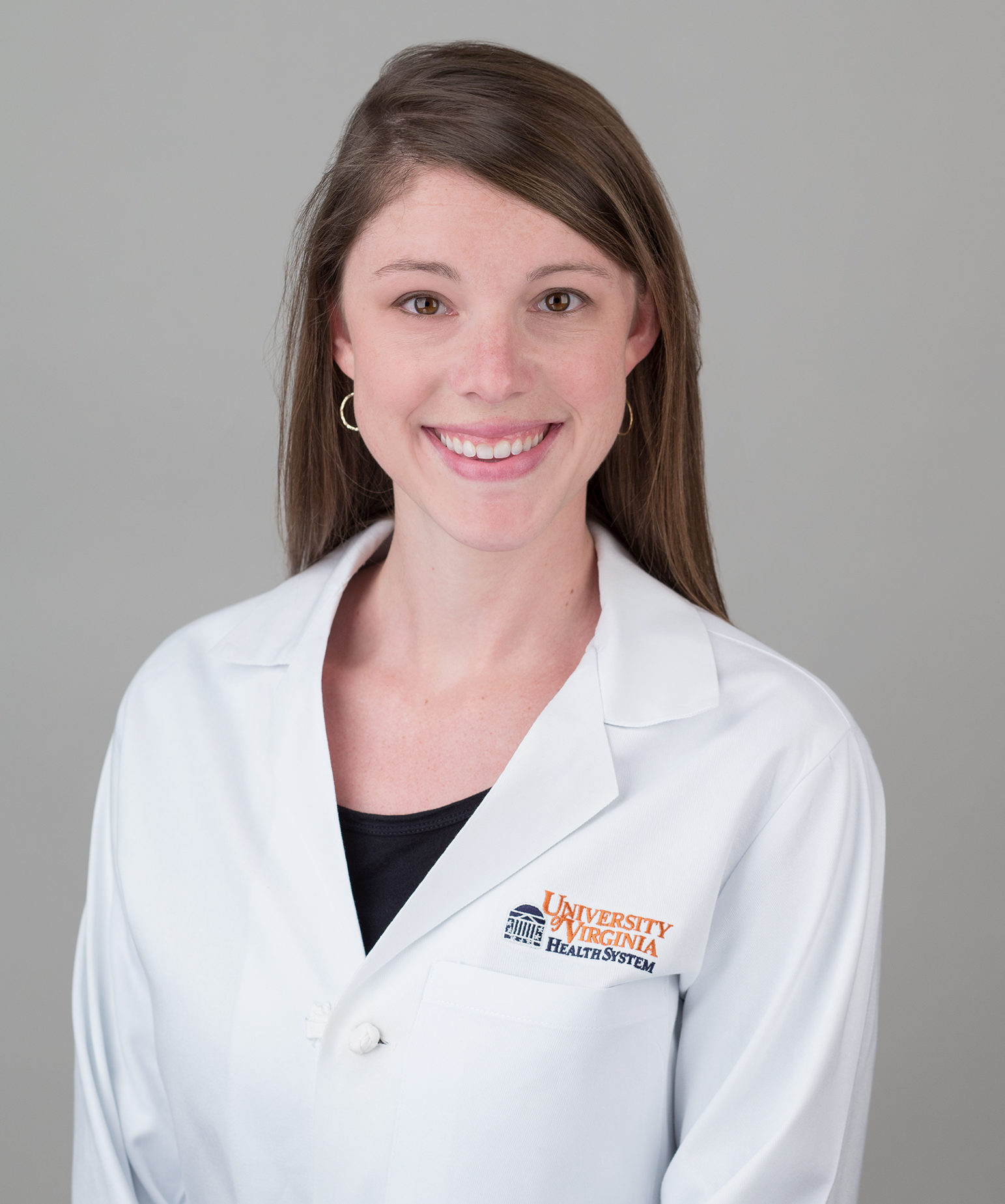
At a Glance:
- Title: Assistant Professor
- Residency: Radiation Oncology, University of Virginia
- Visiting Residency: Paul Scherrer Institute, Center for Proton Therapy in Switzerland
- Medical Degree: George Washington University
Part of a team at UVA pioneering new radiologic approaches to treating gynecologic and other cancers, Kara Romano, MD, credits her colleagues and the superior training she received there for her decision to stay on at UVA Cancer Center. “I went to undergrad and completed my residency at UVA, so I feel at home there,” she says. “But the biggest reason I decided to stay is the positive team dynamics. Radiology, pathology, medical oncology, surgical oncology — we all interact well together. Also, I was extremely well trained there. Even as a resident, I got to play an integral part in tumor boards, which is rare for a resident. This gave me an appreciation for the team approach at UVA.”
We asked Romano to share more about her background, clinical expertise and research interests in the Q&A below.
What drew you to the field of radiation oncology?
Initially I was interested in radiology. I loved looking at images and correlating those with what was going on with the patient. But when I spent more time in radiology, I realized that I really missed taking care of people. Ultimately, I found my way into radiation oncology. This field allows me to use pictures to better explain someone’s story and I get the opportunity to provide patient care, to interact with them and their families and play a more direct role in their overall cancer care. I’m passionate about being involved in a patient’s care from the beginning, throughout treatment and following up over the years.
You did a residency rotation at the Center for Proton Therapy in Switzerland. Can you share more about that experience?
UVA has a relationship with the Paul Sherrer Institute in Switzerland – a world leader in the development of proton beam therapy and the first place to have the “spot-scanning” technique – so I applied to go spend a month learning about their technology. I worked with leaders in the field of radiation oncology and I was exposed to great ideas and clinical skills. They do things a little differently so I was able to return to UVA with some new perspectives on follow-up care and techniques for treating patients, as well as an appreciation for their vision for patient care and implementing new developments. This is incredible technology that is only available at a small number of centers. I learned ways to use it and which patients will benefit most. This knowledge will be beneficial in the future. I am grateful UVA supports residents’ efforts to expand their exposure.
What is your clinical focus?
I treat primarily gynecologic cancers. A vast majority of those are endometrial or cervical just because those are the most common, however I also treat vulvar and vaginal cancers. Occasionally, there are indications for radiation for ovarian cancer, and we are always happy to discuss how radiation can play a role in any number of ways.
What distinguishes UVA in caring for these patients?
No matter which type of cancer we are treating, at UVA we offer a unique approach to care for each patient we see. This may include a combination of approaches, including external beam radiation and/or brachytherapy.
Brachytherapy is an area in which UVA really stands out within our field. We have a brachytherapy suite that is a dedicated procedure room with a CT on rails, high dose-rate brachytherapy as well as anesthesia equipment so it is a fully functional OR.
In the past two years, we’ve begun incorporating MRI into the treatment plans for cervical cancer. This is a process pioneered by [UVA radiation oncologist] Timothy Showalter, MD, that allows us to modify treatment based on the individual patient’s response to an initial course of radiation. There are five separate applicator insertions typically. Between the first and second insertion, the patient gets an MRI that provides information we need to tailor the dose and care plan going forward. This image-guided brachytherapy allows us to provide better treatment of the tumor while protecting nearby organs. Currently, Dr. Showalter and I are doing these procedures.
Will you be involved in research at UVA as well?
Yes, I’ll be focusing primarily on clinical outcomes research. Using database research to look at patients’ experiences at UVA and collaborating with others to look at outcomes of various procedures using different technology.
Dr. Showalter and I also just opened an investigator-initiated, prospective randomized trial for vaginal cuff brachytherapy to treat endometrial cancer. If radiation is indicated after surgery, the number of brachytherapy fractions and dose-per-fraction varies. This study will examine whether we can treat with less dose per fraction for a greater number of fractions and whether we can improve toxicity while maintaining excellent tumor control rates. I’m excited to have this option for patients because it means potentially better outcomes following cancer treatment.
Are there any advances in cancer care that have you particularly excited about the future of your field?
I’m excited we’ve made great strides in tumor control rates. And we have more to do, but there has been a shift to focus on quality of life. Continuing down that road is important. I hope to incorporate pelvic floor rehab through yoga and exercise for women treated for cancer into long-term care; that is a goal for the future.
How do you prefer to communicate with referring providers?
I enjoy getting to know other physicians and working with them, so I am happy to communicate with referring providers via e-mail, phone or Epic messaging — in any way that is most convenient for them.
To refer a patient to UVA Cancer Center, call 800.552.3723.